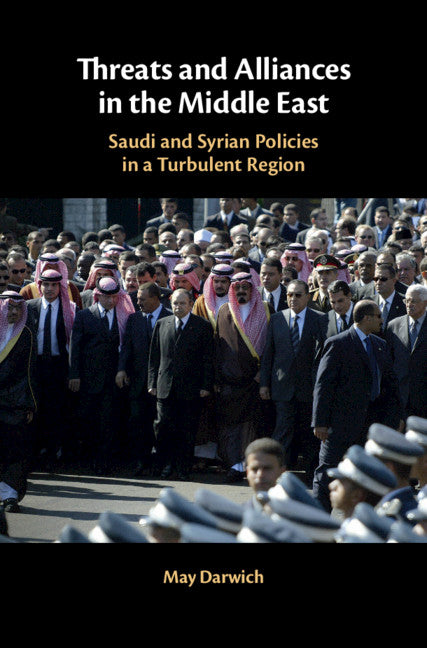Freshly Printed - allow 4 days lead
Couldn't load pickup availability
Threats and Alliances in the Middle East
Saudi and Syrian Policies in a Turbulent Region
Examines Saudi and Syrian policies during three pivotal wars, to understand how identity and power influence state behaviour in the Middle East.
May Darwich (Author)
9781108493628, Cambridge University Press
Hardback, published 26 September 2019
218 pages, 1 b/w illus. 3 tables
23.5 x 15.6 x 1.6 cm, 0.43 kg
'This does not only provide important new knowledge about Saudi and Syrian threat perceptions during three major regional wars, it also constitutes an excellent example of academic bridge building. Combining insights from neo-realism and constructivism from general international relations (IR) literature on alliance making, it is a brilliant example of how a dialogue between IR and Middle East studies can enrich both fields of study.' Morten Valbjørn, Aarhus Universitet, Denmark
Examining differing perceptions of threats and the subsequent alliance choices of two Arab states, Saudi Arabia and Syria, during three pivotal wars in the region: the Iran-Iraq War (1980–1988), the Lebanon War (2006), and the Gaza War (2009), May Darwich analyses how ideational and material forces influence leaders' perceptions in the Middle East, and their broader international relationships. Using these comparative cases studies, Darwich advances our understanding of why, and the conditions under which, identity can play a predominant role in shaping the perception of threat in some cases, whilst material power is predominant in others. By engaging in significant debates about the role identity and material power in shaping state behaviour in the Middle East, this study has significant implications for international relations theory and beyond.
1. Introduction: debating threat perception
2. Why and when states perceive threats: a theoretical framework
3. The Iran-Iraq War (1980–1988)
4. The 2006 Lebanon War
5. The 2009 Gaza War
6. Conclusion.
Subject Areas: Constitution: government & the state [JPHC]


